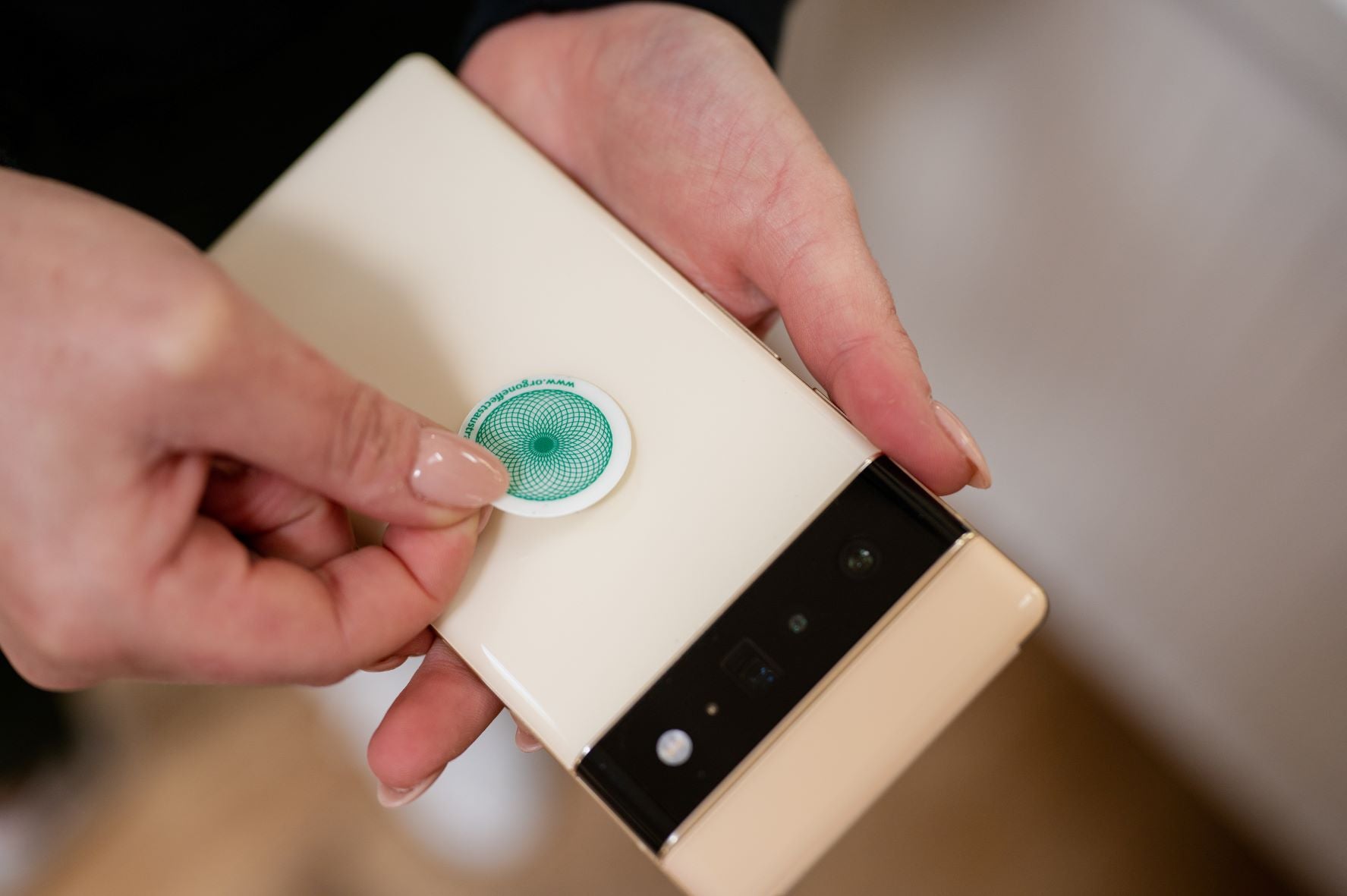With the increasing use of electronic devices and telecommunication systems, there has been growing concern about the potential health effects of exposure to electromagnetic fields (EMF). This exposure can lead to a variety of health conditions, but can EMF cause cancer?
EMF is a form of non-ionizing radiation emitted by sources such as mobile phones, wireless devices, and household appliances.
Scientific studies have been conducted to determine the risks of EMF exposure, particularly in relation to cancer. This article aims to provide an overview of the background information surrounding the link between EMF and cancer, examining the various studies and evidence that have been conducted to understand the potential health risks associated with EMF exposure.
By exploring the epidemiologic and experimental studies, as well as the levels of exposure and biological effects, this article seeks to provide a comprehensive understanding of the existing scientific evidence on whether EMF can cause cancer.
The Study of Electromagnetic Fields
The study of electromagnetic fields (EMF) aims to evaluate potential adverse health effects associated with exposure to these fields. This field of research encompasses various types of studies, including laboratory studies, animal studies, and epidemiological studies on humans.
Laboratory studies involve the examination of cells and tissues in controlled environments to understand the biological effects of EMF.
These studies help identify the mechanisms by which EMF may affect the body and potentially contribute to the development of diseases such as cancer.
Animal studies, on the other hand, involve the exposure of animals to EMF to evaluate its effects on their health. These studies provide valuable insights into the potential risks of EMF exposure, helping to determine safe exposure limits for humans.
A study published in Environmental Health and Preventative Medicine determined that mice exposed to extremely low levels of EMF were far more likely to develop chronic myeloid leukemia.
Epidemiological studies focus on analyzing large populations to investigate the relationship between EMF exposure and the incidence of diseases, including cancer. These studies aim to provide evidence of a link between EMF exposure and specific health outcomes in human populations.
Moving forward, researchers are actively investigating the possible carcinogenic effects of power-frequency fields and exploring the long-term health effects of mobile phone use, given their widespread use and close proximity to our bodies.
The study of EMF involves various types of studies, including laboratory, animal, and epidemiological studies, to evaluate potential adverse health effects.
Ongoing research is focused on exploring the carcinogenic effects of power-frequency fields and understanding the long-term health effects of mobile phone use.
Types of Electromagnetic Fields (EMF)
Electromagnetic fields (EMF) are a type of non-ionizing radiation that is produced by various sources, including mobile phones, electrical appliances, and power lines.
There are different types of EMF, each with its own frequency and potential health risks. Understanding these types of EMF is crucial in examining their potential effects on human health.
In this article, we will explore the different types of electromagnetic fields and their association with potential health risks, particularly the risk of cancer.
By delving into laboratory studies, animal studies, and epidemiological studies, we can gain valuable insights into the biological effects of EMF and the possible link between EMF exposure and the development of cancer.
Electric field
The electric field is a fundamental property of electrically charged particles, such as electrons and protons. It is a force field that surrounds these charged particles and exerts a force on other charged particles in its vicinity.
Electric fields are typically measured in volts per meter (V/m). This measurement indicates the strength of the electric field at a particular distance from the source.
The higher the voltage, the stronger the electric field and the more force it exerts on charged particles.
In terms of exposure, occupational settings often involve higher levels of electric field exposure. These settings include industries such as power generation and distribution, where high-voltage equipment and power lines generate strong electric fields. Workers in these industries are at risk of higher exposure to electric fields.
A review published in Environmental Health Perspectives noted there was a lot of evidence of a link between EMF exposure and childhood cancer, adult leukemia, and brain tumors in relation to occupational exposure.
Residential settings also have various sources of electric field exposure. Electrical appliances and household devices, such as hair dryers and electric shavers, produce electric fields. However, the strength of these fields is typically lower compared to occupational settings.
The electric field is a force field that surrounds charged particles, exerting a force on other charged particles. It is measured in volts per meter and indicates the strength of the electric field.
Occupational settings have higher electric field exposure due to industries involving high-voltage equipment, while residential settings also have sources of electric field exposure, albeit at lower levels.
Magnetic field
Magnetic fields are created by the motion of charged particles. When electric charges, such as electrons, move through a conductor or a magnet, they generate a magnetic field. The properties of a magnetic field include its strength, direction, and the region in which the magnetic force can be detected.
Unlike electric fields, which exert forces on charged particles, magnetic fields exert forces on moving charged particles. This interaction between electric and magnetic fields is a fundamental aspect of the electromagnetic field.
The electromagnetic field consists of both electric and magnetic fields that oscillate and propagate through space.
Common sources of magnetic field exposure include electrical devices and appliances such as power lines, transformers, and motors.
The intensity level of magnetic fields varies depending on the source and distance from it.
For example, high-voltage power lines and mobile phone base stations can produce higher magnetic field levels compared to household appliances and common electrical devices.
The relevance of magnetic fields in relation to potential health effects, particularly in regard to cancer risk, has been a topic of scientific investigation.
Epidemiological studies and experimental research have been conducted to understand the association between magnetic field exposure and various health outcomes, including cancer.
Some studies suggest a possible link between magnetic field exposure and certain types of cancer, such as childhood leukemia and possibly breast cancer, but the overall scientific evidence is limited.
It is important to note that the magnetic field levels typically encountered in everyday life are considered to be within safe exposure limits established by regulatory agencies. Further research is needed to better understand the potential health effects of magnetic field exposure and to develop appropriate guidelines for public exposure limits.
Radiofrequency fields
Radiofrequency (RF) fields are a type of electromagnetic radiation with a frequency range between about 3 kilohertz (kHz) and 300 gigahertz (GHz). These fields are non-ionizing, which means they do not have enough energy to directly damage DNA or cause ionization in biological tissues.
Cell phones and other wireless devices emit RF fields through their antennas. The antennas generate electromagnetic waves that carry information, such as voice or data signals. When we use cell phones for calls, text messages, or internet browsing, the RF fields are transmitted and received by the device.
Exposure to RF fields from cell phones and wireless devices has been a subject of concern regarding potential health effects. Some studies have suggested a possible link between RF field exposure and various health issues, including brain tumors, acoustic neuromas, and other types of cancer.
One review published in The National Library of Medicine called for cell phone radiation to be labeled as a 'probable carcinogen' because of the risk of brain tumors.
The World Health Organization's International Agency for Research on Cancer (IARC) has classified RF electromagnetic fields as possibly carcinogenic to humans (Group 2B), based on evidence from studies in humans and experimental animals.
RF fields emitted by cell phones and wireless devices have been investigated for their potential health effects. It is important for further research to be conducted to better understand the long-term effects of exposure to RF fields.
Extremely low-frequency fields (ELF)
Extremely low-frequency fields (ELF) are a type of electromagnetic field that is produced by electric devices such as televisions, refrigerators, and computer monitors. These fields have been a subject of concern due to their potential health effects.
Exposure to ELF fields is common in our daily lives, as these fields are produced by many household appliances. When we use these electric devices, they generate ELF fields as a result of the electric current flowing through them. These fields can extend a short distance from the device itself.
An article published in the Annual Review of Public Health noted that studies have consistently shown an increased risk for childhood leukemia associated with ELF magnetic fields.
While the scientific evidence on the health effects of ELF fields is limited , some studies have suggested a potential link between long-term exposure to these fields and adverse health outcomes such as childhood leukemia and brain tumors.
To limit your exposure, there are some preventive measures that can be taken to reduce exposure to ELF fields. These include maintaining a safe distance from appliances, especially when they are in use. For example, sitting a few feet away from a television or computer monitor can help minimize exposure.
Additionally, keeping your cell phone away from your body when not in use and using speaker function or earbuds can help reduce exposure to ELF fields generated by these devices.
It is also important to recognize the importance of unplugging occasionally from electronic devices to reduce exposure to ELF fields. Taking breaks from constant exposure can help reduce overall exposure and provide a healthier balance in our lives.
When it is not possible to distance yourself from EMF exposure, we suggest using EMF protection products.
With the evidence presented, it is understandable to be concerned about the harmful effects of EMF radiation in your home.
The Geoclense is the ultimate EMF protection for your entire home. With its advanced technology, Geoclense works to neutralize and harmonize the electromagnetic radiation emitted by electronic devices, Wi-Fi routers, and other sources, helping to create a healthier living environment for you and your family.
If you value the well-being of your loved ones, then Geoclense is a must-have. By reducing the negative impact of EMF radiation, you can enjoy more restful sleep, improved concentration, and overall better health and vitality.
Take action now and protect your home by ordering Geoclense today. Your family's well-being is worth it!
If you are interested in products backed by science, you can check out our shungite line.
Shungite is a natural stone that has been scientifically proven to provide EMF protection. Our range of Shungite products, including pyramids, necklaces, and cell phone stands, are designed to shield you from the harmful effects of EMF.
Your health should be your top priority. With Shungite, you can have peace of mind knowing that you are taking proactive steps to protect yourself from the potential dangers of EMF exposure. Don't let EMF harm your well-being when there is a solution available.
Take action now and browse our selection of Shungite products to find the perfect EMF protection for you. Invest in your health and enjoy the benefits of Shungite today!
EMF Exposure to Humans
In today's modern and interconnected world, we are constantly surrounded by electromagnetic fields (EMFs) emitted by various electronic devices and communication systems. EMFs are a form of non-ionizing radiation that can be found in our homes, workplaces, and public spaces.
A paper published in Bio Electro Magnetics noted that there was a link between EMF exposure and 'several types of cancer'. However, it was not yet understood how exposure affected the cells in the human body to cause cancer.
Despite their prevalence, there has been ongoing debate and concern about the potential health risks associated with EMF exposure. By understanding the facts and taking necessary precautions, we can make informed decisions about our EMF exposure and safeguard our well-being.
Occupational Exposure
Occupational exposure to electromagnetic fields (EMF) is a concern in several work settings, particularly those involving the use of RF EMF-producing equipment.
For example, workers using RF polyvinyl chloride welding machines and radar systems often face significant EMF exposure. Additionally, medical professionals operating magnetic resonance imaging (MRI) equipment are exposed to RF EMF.
A review published in Science Direct found a link between occupational EMF exposure and breast cancer-particularly in men. This is likely because there are fewer females found in these male-dominated industries rather than a higher prevalence of cancer in men.
Various variables influence the interaction of RF EMF with the human body. The signal frequency plays a crucial role, as different frequencies have different biological effects.
Exposure level, duration, and the characteristics of the absorbing tissue also influence the impact of RF EMF.
Higher exposure levels and longer durations can potentially increase health risks, while characteristics such as body composition and tissue conductivity determine the level of energy absorbed by the body.
Protecting workers from occupational exposure to RF EMF is crucial. Implementing measures like engineering controls, administrative controls, and personal protective equipment can help mitigate risks.
Regular monitoring of RF EMF levels in the workplace is essential to ensure compliance with exposure limits and to identify potential hazards.
Occupational exposure to RF EMF occurs in various work settings, including those utilizing RF polyvinyl chloride welding machines, radar systems, and medical equipment like MRI.
The variables that influence the interaction of RF EMF with the human body include signal frequency, exposure level, exposure duration, and tissue characteristics.
Protecting workers through proper controls and monitoring is necessary to minimize the potential health risks associated with occupational EMF exposure.
Residential Exposure
Residential exposure to electromagnetic fields (EMF) occurs through various common sources within homes.
These sources include electrical appliances, wireless devices, and mobile phone base stations.
EMF exposure from these sources can potentially have health effects, particularly in relation to radiofrequency (RF) EMF.
A study of electromagnetic field exposures and childhood cancers in New Zealand showed an increased risk of cancer among children with significant residential EMF exposure, including the use of electric blankets.
Wireless devices such as mobile phones, laptops, and Wi-Fi routers emit RF EMF. These devices are commonly used in residential settings, and their close proximity to individuals can result in exposure to RF EMF.
Additionally, electrical appliances such as refrigerators, televisions, and hair dryers also emit EMF, although at lower frequencies.
A European study published in The Journal of Exposure Science and Environmental Epidemiology reported associations between leukemia risk and personal use of household appliances.
Mobile phone base stations, which are part of the infrastructure that enables mobile communication, can also contribute to RF EMF exposure in residential areas.
These base stations emit EMF to communicate with mobile devices. While the levels of exposure from base stations are typically much lower compared to wireless devices, their presence in close proximity to residential areas should be taken into consideration.
The levels of EMF exposure in residential settings are generally within the typical maximum levels set by regulatory authorities.
However, it is important to note that the variables involved in the interaction of RF EMF with the human body can influence the impact of exposure.
Factors such as signal frequency, exposure level, duration, and the characteristics of the absorbing tissue play a role in determining the potential health effects.
Residential exposure to EMF, particularly RF EMF, can occur through the use of wireless devices, electrical appliances, and the presence of mobile phone base stations.
While the typical maximum levels of public exposure are generally within regulatory limits, it is important to consider the variables that influence the interaction between RF EMF and the human body to better understand the potential health effects.
Mobile Phone Base Stations
Mobile phone base stations play a crucial role in enabling mobile communication and providing coverage to specific areas. These base stations serve as the interface between mobile phones and the wider network infrastructure. They transmit and receive signals to and from mobile devices, allowing for seamless communication.
In the past, mobile phone base stations consist of antennas mounted on towers or rooftops. These antennas transmit and receive radio wave signals, which carry voice and data information between mobile phones and the network.
By strategically locating base stations, mobile network providers can ensure coverage over a specific geographic area.
With the expansion of 5G technology the ability to distance yourself from EMF exposure is much more difficult.
With 4G technology, the radio waves would travel a distance of about 20 km. With 5G towers, this is limited to 305 meters.
For this reason, 5G small cells will need to be installed across the entire 5G coverage area. These small cells can be mounted on lights, signs, and buildings.
Check out: Lighting up America's Streets: The Invasion of 5G Streetlights
It is important to note that the levels of radiofrequency fields emitted by mobile phone base stations at ground level and in areas accessible to the public are typically well below hazardous levels.
Regulatory authorities have established guidelines and limits to ensure that public exposure to radiofrequency fields remains within safe margins.
Wireless Devices and Electrical Devices
Wireless devices, such as cell phones and portable telephones, emit non-ionizing radiation in the form of radiofrequency energy. The potential health effects of this type of radiation have been a topic of debate and research.
In a meta-analysis published in the May 2008 issue of the International Journal of Oncology, Swedish researchers found significant associations between long-term cell phone use and brain tumor risk.
“We found that cell phone use is linked to gliomas [malignant brain tumors] and acoustic neuromas [benign tumors of the brain’s auditory nerve] and are showing up after only ten years,” says lead author Lennart Hardell, an oncologist and cancer epidemiologist at University Hospital in Örebro, Sweden.
The levels of non-ionizing radiation emitted by wireless devices vary depending on factors such as device type, proximity to the user, and usage patterns.
Cell phones, for example, emit radiofrequency energy when making or receiving calls, sending texts, or accessing the internet.
The specific absorption rate (SAR), a measure of how much radiofrequency energy is absorbed by the body, is used to evaluate the potential health risks.
Check out: Do you know your SAR Value? Cell Phone Radiation Level Chart
To ensure safe human exposure to radiofrequency energy, regulatory authorities, such as the Federal Communications Commission (FCC), have established guidelines and limits.
These guidelines specify the maximum SAR values that wireless devices can emit and still comply with safety standards. The FCC sets SAR limits at levels far below those known to cause harm, accounting for factors such as device placement, usage time, and the body parts exposed to the radiation.
It is important to note that the recognized biological effect of radiofrequency radiation is heating.
Therefore, the SAR limits set by the FCC aim to prevent excessive heating of body tissues.
Research is ongoing to further investigate the long-term effects of non-ionizing radiation from wireless devices, but currently, the evidence suggests that they pose minimal risk to human health when used properly.







